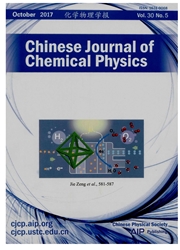

 中文摘要:
中文摘要:
Mesoporous 硅石材料经由采用房间温度的一个大音阶的第五音胶化方法被综合离子的液体(1-butyl-3-methylimidazolium tetrafluoroborate,[bmim ][ 中等、进一步的新溶剂与表面活化剂修改了的 BF 4])(hexadecyl-trimethyl-ammonium 溴化物, CTAB ) 作为毛孔 templating 材料。综合样品被传播电子显微镜学, X 光检查衍射,和 N 2 吸附解吸附作用技术描绘。结果显示我酣睡的硅石由使用综合了[bmim ][BF 4] 和 CTAB 当混合模板显示出结构的顺序和更小的毛孔缩放的更好的中央,与我相比,酣睡的硅石材料由使用单身者综合了[bmim ][ 在一样下面的模板调节的 BF 4] 。这显示表面活化剂的存在能影响现在的合成方法准备的硅石的微观结构。
 英文摘要:
英文摘要:
Mesoporous silica materials were synthesized via a sol-gel method employing a room temperature ionic liquid (1-butyl-3-methylimidazolium tetrafiuoroborate, [bmim][BF4]) as a new solvent medium and further modified with surfactant (hexadecyl-trimethyl-ammonium bromide, CTAB) as a pore templating material. The synthesized samples were characterized by the transmission electron microscopy, X-ray diffraction, and N2 adsorption-desorption techniques. The results indicated that the mesoporous silica synthesized by using [bmim][BF4] and CTAB as mixed templates showed better mesostructural order and smaller pore size, compared with mesoporous silica materials synthesized by using single [bmim][BF4] as template under the same conditions. This indicates that the presence of surfactant can affect the microstructures of silica prepared by'the present synthesis method.
 同期刊论文项目
同期刊论文项目
 同项目期刊论文
同项目期刊论文
 Effects of temperature and current density on zinc electrodeposition from acidic sulfate electrolyte
Effects of temperature and current density on zinc electrodeposition from acidic sulfate electrolyte Self-Assembly of Platinum Nanoparticle/ Multi- Walled Carbon Nanotube Multilayer Film on Au Substrat
Self-Assembly of Platinum Nanoparticle/ Multi- Walled Carbon Nanotube Multilayer Film on Au Substrat Electro-deposition of platinum nanoparticles on 4-mercaptobenzene-functionalized multi-walled carbon
Electro-deposition of platinum nanoparticles on 4-mercaptobenzene-functionalized multi-walled carbon Effects of 1-butyl-3-methylimidazolium hydrogen sulfate-[BMIM]HSO4 on zinc electrodeposition from ac
Effects of 1-butyl-3-methylimidazolium hydrogen sulfate-[BMIM]HSO4 on zinc electrodeposition from ac 期刊信息
期刊信息
